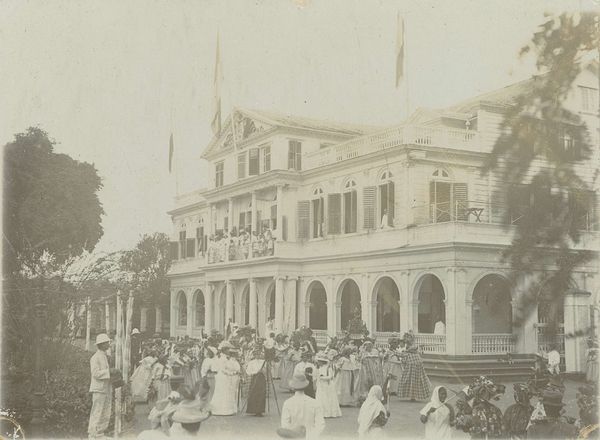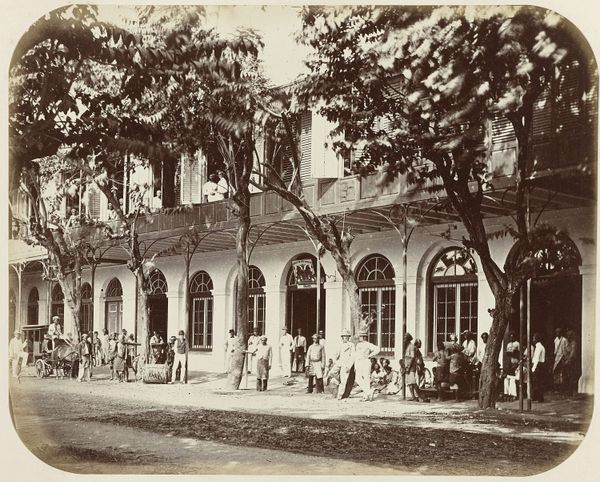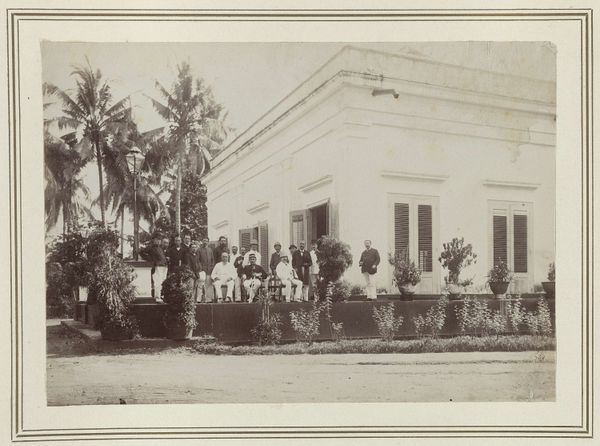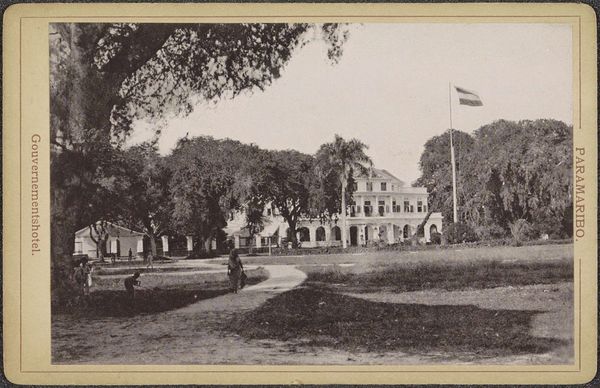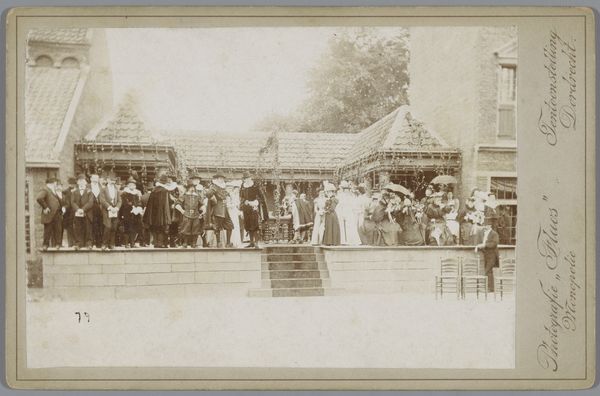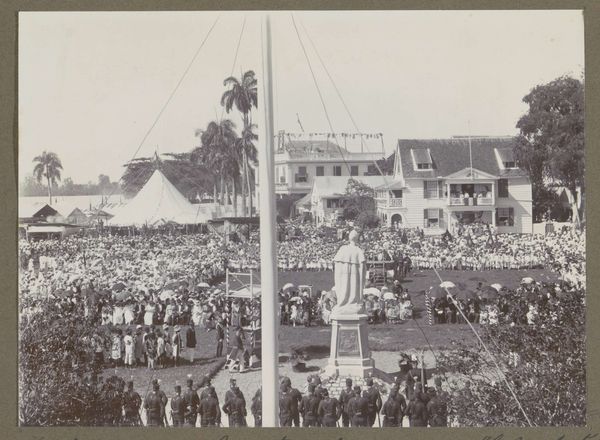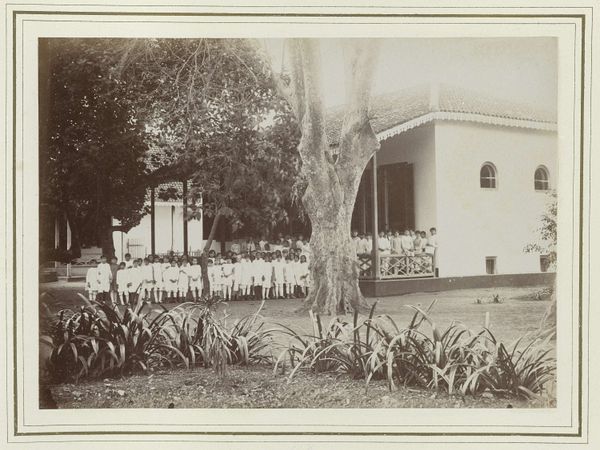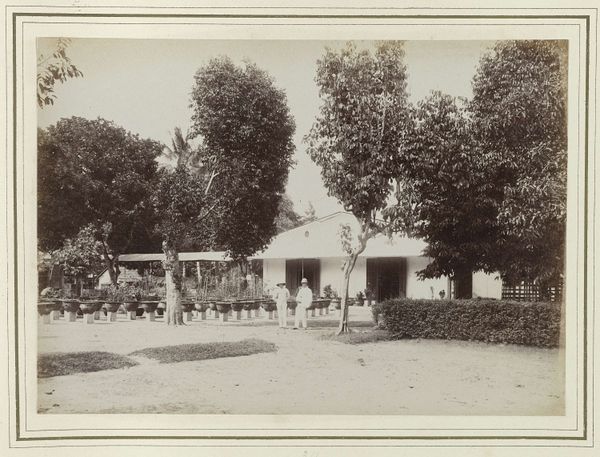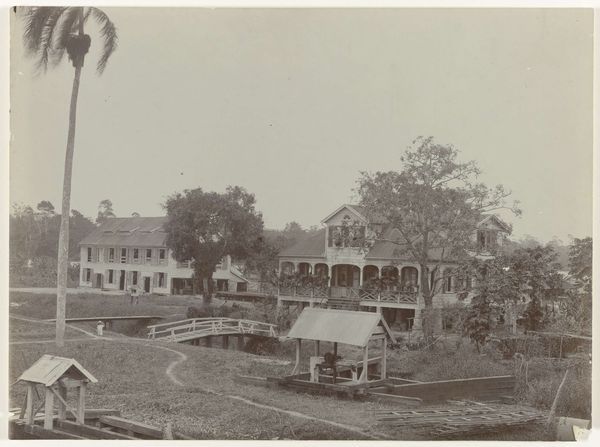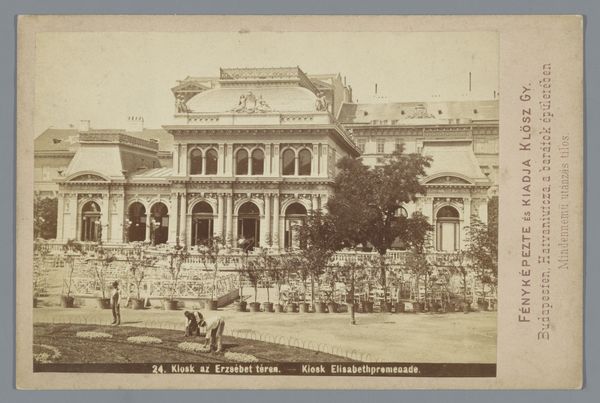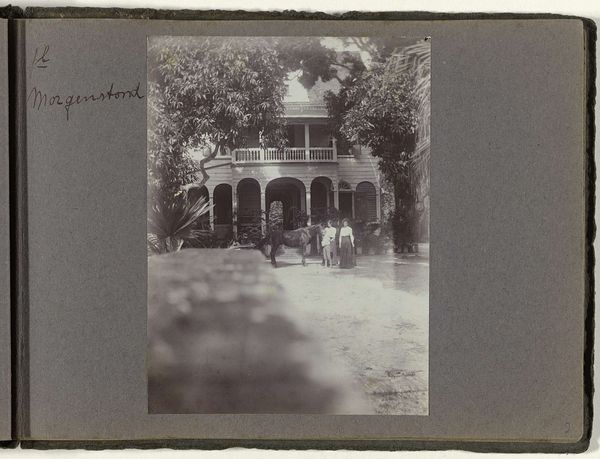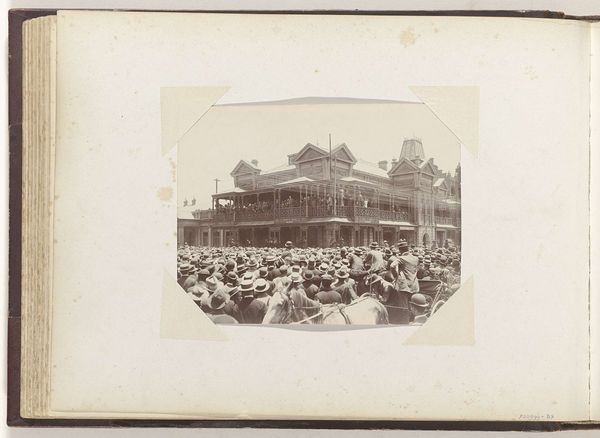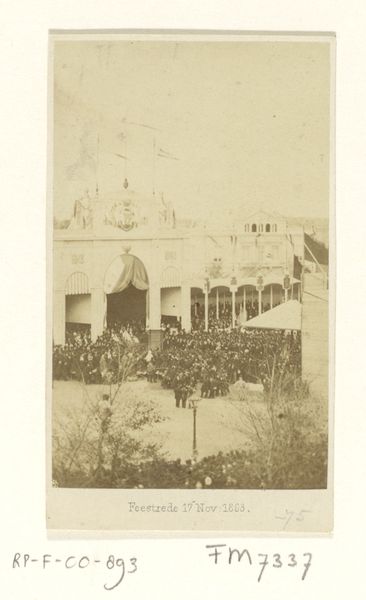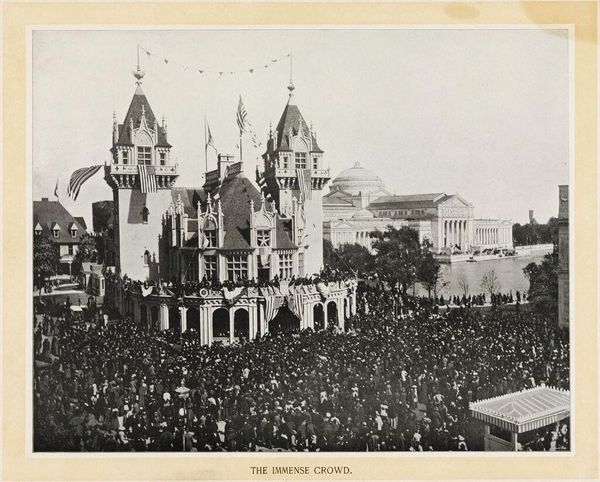
Volksspelen op Koninginnedag op het Gouvernementsplein Possibly 1905 - 1931
0:00
0:00
photography
#
pictorialism
#
landscape
#
street-photography
#
photography
#
cityscape
Dimensions: height 128 mm, width 180 mm
Copyright: Rijks Museum: Open Domain
Editor: This photograph, titled "Volksspelen op Koninginnedag op het Gouvernementsplein," by Eugen Klein, likely taken sometime between 1905 and 1931, captures what appears to be a Queen's Day celebration. I am immediately struck by the image's texture and density; the sheer number of people creates a visual buzz. What strikes you most about this piece? Curator: The production of this photograph, particularly in this era, requires us to consider the laborious process involved in creating even a single image. From the preparation of the photographic plate to the careful development, it represents a significant investment of time and resources. How might the constraints of photographic technology at that time have shaped the artist's choices in capturing a scene like this? The pictorialist style also sought to elevate photography to the level of fine art. This could be interpreted as an attempt to document a celebration for a Dutch Queen, but what are the social contexts or commentary of capturing what is essentially a staged or arranged landscape of local inhabitants and government administration? Editor: That’s fascinating. It does seem that arranging such a dense scene would have been a considerable undertaking, given the limitations of the medium at the time. Perhaps there's an implied relationship of power here, in who gets to participate and who’s being presented, and why they have to "play" their parts on camera, using social currency as production material, just like with the use of platinum or other light sensitive compounds? Curator: Precisely. And it's worth considering, then, how photography itself was being consumed during that period, right? Beyond individual prints, it served a crucial role in shaping the idea of national identity and projecting a particular image of the nation to the world. Understanding these images as products of both technological and social processes provides a valuable insight into the broader socio-political landscape. We can then begin to read "Volksspelen op Koninginnedag" through these frameworks to appreciate its function and role beyond aesthetic values. Editor: Thank you, it completely reframes my understanding of the photograph's purpose, as more of a manufactured moment, designed and developed, quite literally, through materials and production for societal consumption. Curator: And understanding that material relationship adds so much depth to what we’re seeing and how these images circulated then, compared to the ephemerality of image culture today.
Comments
No comments
Be the first to comment and join the conversation on the ultimate creative platform.
